
From Junior Programmer to Tech Entrepreneur: Simon Hamilton's Perfect Partition
June 2, 2023 by Jessika Leatherbury
By: Sunnie Dawn Baker

For Simon Hamilton, tech began at home. Simon, a junior at Latta High School, grew up watching his father, Jeremiah, do all sorts of programming and even fix their game consoles when they would break. His father is a software developer for the Chickasaw Nation, so Simon had plenty of opportunities to be surrounded by a world of technology. He found it fascinating and, when he got his first computer in seventh grade, he dove headfirst into learning about the hardware and software components, trying to soak up every bit of knowledge he could.
By the time Simon was old enough to take classes at Pontotoc Technology Center, he was ready to learn all the instructor, Tina Davis, could teach him. Davis approaches her computer classes at Pontotoc Technology Center with an independent study approach, setting benchmarks, but also allowing students to work at their own pace. For Simon, this pace was a breakneck speed as he went through the materials. In fact, by the time he graduates high school, he will have completed eight different certifications, going above and beyond the expectations of a high school student.
As one of Stacy Oakley’s DECA students at Latta, Simon wanted to design a project for the state convention. With his background, the Innovation Plan category was an obvious choice, though he needed to figure out what his project was going to be. Simon tapped into his love of solving problems—it is the thing he likes most about computer programming— and came up with an idea to solve a problem with formatting computer hard drives.
On our computers, we have hard drives that store all of our data, but these hard drives need formatting in order to store the data. These are essentially the instructions for your computer to talk to your hard drive. The most common types of formatting are called “FAT32” and “NTFS.” While FAT32 is compatible with the majority of computers, it can only store up to four gigabytes of data. This can be problematic if you are dealing with a lot of files or a large amount of data. NTFS, however, has the potential to store much more data. As Simon says, “NTFS has no conceivable file limit size, so you can store terabytes of data within a single file without any issues.” Because of this difference in capabilities, many businesses, and individuals, would see NTFS as preferable to FAT32. However, changing the formatting can be tricky. If someone just tries to do it themselves, they could reformat the drive, but also wipe it clean, losing all of the files stored on that drive, which would be even more problematic than not having enough file space.
Simon developed an application called Perfect Partition, that would allow users to automatically format their hard drives to NTFS, without the risk of losing all their data. The solution Simon found was to have the application work with the command prompt instead of directly interacting with the hard drive. This alleviates the risk of wiping the drive clean, but also provides more security for any client using the application. Since it isn’t interacting directly with the hard drive, then all of the information is still secure. This was a major concern for Simon; he didn’t want anyone to think that this application would be harmful or perceived as a privacy risk. Instead, he wanted it to be a trusted program, which is why his partner in his project, Shannon Page, is so important.
While Simon came up with the idea and coded the application, they also had to have a way to put it out to the public that would make it user friendly and also be seen as legitimate. The first key step was to design a website for the program that would be seen as legitimate. Shannon, also a junior at Latta, handled the design of the program to make sure that everything was easy to understand and appeared secure and legitimate. Simon and Shannon spent hours carefully looking at the various design aspects—color schemes, logos, user interface, and making sure that everything was clear and user friendly. While the actual coding of the application was important, this design was equally important to ensure people would actually trust it enough to put it to use.
Initially started as a project for DECA, Simon and Shannon would like to see this program go out into the larger world. In their initial run of the project, they had several downloads from companies and organizations, but the application is not currently available for public use. However, Simon is planning on re-launching a website in the upcoming year to take the project public. At this time, Simon would like for the initial download to be free to consumers, though he is also planning on having different subscription tiers for larger corporations where they could get additional added benefits for a fee.
While Simon didn’t set out to be an entrepreneur, his passion for problem solving has situated him, and his partner Shannon, within this space. Entrepreneurship and innovation go hand in hand because both are essentially about discovering a problem and then finding a solution. Programs like DECA encourage this type of thinking, but also the types of partnerships that can draw from the unique strengths of different individuals. In the case of Simon and Shannon, Simon’s technological knowledge joined with Shannon’s design expertise to provide a clear, easy to use, and trustworthy application that can be beneficial to individuals, businesses, and organizations.

Sign up to receive more news from the Ada Jobs Foundation HERE!
Written by
Jessika Leatherbury
You may also interested in:

Adapt and Overcome: Allison Poe’s Recipe for Resilience and Growth
By: Sunnie Dawn Baker Allison Poe has always followed her feet. She waits for the signs to appear and, once she recognizes them, she travels that path, and has never
Jeff Warren: A Life in Sound, Vision, and Storytelling
By: Sunnie Dawn Baker When Jeff Warren got involved in the Houston music scene as a teenager, he had no clue where his path would lead. Now, nearly thirty years
From Pitch to Progress: ECU's Glass Recycling Program Turns Waste into Opportunity
By: Sunnie Dawn Baker In 2018, Dr. Christine Pappas competed in Ada Jobs Foundation’s Big Pitch Competition by promoting grinding glass bottles into sand. She won the Big Pitch that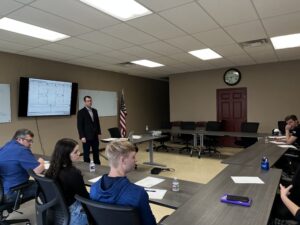
The Importance of Customer Discovery: Know Your Audience and Know Your Market
By: Sunnie Dawn Baker Entrepreneurs and small business owners must consider many factors to achieve success, with their target market being one of the most crucial. Sometimes, when people are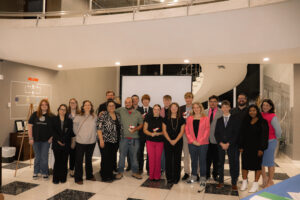
What Does Economic Development Do for You? The Significance of the Economic Multiplier
By: Sunnie Dawn Baker People often find the term “economic development” vague and confusing. Understanding how economic development works and benefits the community can be challenging. Though there are many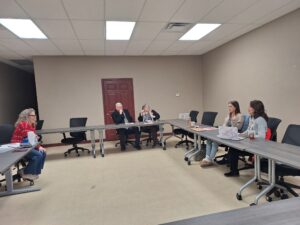
Helping Entrepreneurs One Workshop at a Time: Lauri Rowe and QuickBooks for Small Businesses
Entrepreneurs tend to be filled with passion and big ideas. They have found a solution to a problem they see in the world, and they barrel ahead, excited for their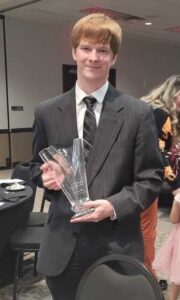
Hunter Cook: Technology, Entrepreneurship, and the Written Word
By: Sunnie Dawn Baker Hunter Cook started writing when he was seven years old. At first, he wanted to write comic books, but then he realized he couldn’t draw. He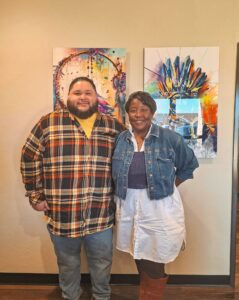
Empowering Native Artists: FAME App Brings Innovation to First American E-Commerce
By: Sunnie Dawn Baker Entrepreneurs are problem solvers. They are constantly striving for solutions to issues they see in the world or in their own lives. In the case of
Learn, Connect, and Grow: 2025 Workshops for Aspiring and Current Business Owners
By: Sunnie Dawn Baker A new year brings new possibilities, and, at the Ada Jobs Foundation, it also brings a new round of programming and workshops. As the local Economic